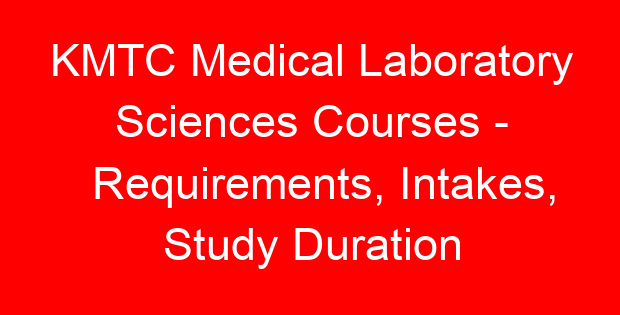History of the Kenya National Union of Teachers- KNUT
The teachers of this country were subjected to different terms and conditions of service by the many employers they belonged to. The employers who included missionaries and local councils never allowed them to meet and exchange views. This kept them totally ignorant as regards to their rights and therefore were seriously exploited by their masters. Despite the fact that they were kept in the dark, they slowly learned the need to form organizations still based on religious sect organized to the highest at provincial level.
However by 1934 Messrs. James Gichuru and Eluid Mathu formed a teacher’s organization known as Kenya African Teachers Union (KATU). This Union eventually fizzled away under the pressure of powers of the time. This was because it was very difficult to organize an effective national organization of workers at that time because of communication problems.
It was not until the early fifties, when Makerere and Kagumo Colleges produced a higher caliber of teachers, which teachers’ organizations began coming up because these teachers communicated after training and hence learnt of the diversity of their terms and conditions of service.
They began by forming sectional or regional Teachers Organizations based on denominations or Provinces. E.g.:
(i) Nyanza African Teachers Union (NATU);
(ii) Catholic African Teachers Association (CATA) both in Nyanza Province;
(iii) Rift Valley African Teachers Association (RATA);
(iv) Coast African Teachers Union (CATU);
(v) Central Province African Teachers Union called Kikuyu Teachers Union (KTU)
Still, there was no way teachers could correspond with their counterparts in other Provinces.
In 1955, one of the teacher’s leaders from Rift Valley Hon. Daniel T. Moi now the retired President of the Republic of Kenya was elected to the Legislative Council (Leg.co.) now called National Assembly. He later successfully moved a freelance motion in the house in 1957 that the Government should help the teachers of this country to form one national body. The Government accepted the motion.
This made the Minister for Education Mr. W.F. Coutts invite all leaders to a meeting in December 1957 at Pumwani D.E.B. School. At this meeting, one teacherâs organization called Kenya National Union of Teachers (KNUT) was born. An Interim Central Executive Committee was set up with Mr. Ignatius Mkok as interim President and Mr. Stephen J. Kioni as interim Secretary General.
On 10th December 1958, the Central Executive Committee (C.E.C) convened the first Annual Conference at the Pumwani D.E.B. School. At this Conference, the KNUT Conference was ratified. The 1st National elections were held and Mr. Samwel Ayany was elected the 1st President and Mr. Stephen J. Kioni the 1st Secretary General.
On 14th May 1959 KNUT was officially registered as A Trade Union.
The Growth and Further Development of the KNUT:
Even after the registration of KNUT as a Trade Union, no serious work could be done because Mr. Stephen Kioni who had been elected as Secretary General was still a full-time teacher at Kilimambogo Teachers Training College.
It was not until 1960 when Joseph Kioni resigned from teaching to devote his energy full-time to KNUT.
He established the first KNUT Office in one of the garages in Ruiru Town without salary, since the Union had no funds to pay him. That same year 1960 Mr. Samwel Ayany attended a World Confederation of Organisations of the Teaching Profession (WCOTP) Assembly in ROME where he got KNUT affiliated to WCOTP although he had been invited to attend as a representative of the Nyanza African Teachers Union (NATU). He made an approach for assistance to KNUT from WCOTP. The WCOTP accepted and undertook to pay Mr. S.J. Kioni part of his salary. This was so until 1964 when the Union began realizing some money from members through a check-off system.
Policy Demands:
Soon after setting up offices, the Central Executive Committee, which later became the National Executive Council, met and issued the first policy demands, which included:-
(a) A single Employer for all teachers.
(b) Unified Terms and Conditions of Service.
(c) Free Pension for all teachers.
(d) Provision for negotiating machinery.
(e) Pay rise for all teachers in all grades.
(f) Responsibility allowance for all posts of responsibility.
(g) Abolition of the Colonial Code of Discipline.
The government responded by appointing the Lawrence Sagini Commission to look into the demands of KNUT.
After prolonged negotiations, KNUT rejected the recommendations of this Commission. The government then appointed another body called the Teachers Salaries Commission. Whose recommendations were not very different from the Lawrence Commission. Here, the KNUT resolved to stage token strikes.
In 1961, went for Labour studies in the USA and James K. Njoroge acted as Secretary General. The same Njoroge became Permanent Secretary, Ministry of Education.
The Token Strikes:
These strikes were staged selectively in a number of branches to test the Unions capability in organizing a strike. There were two token strikes staged as follows:-
(a) 19th - 20th March 1962 covered the following branches - Nairobi, Nyeri, Mombasa, Kilifi, Baringo, South Nyanza and North Nyanza.
(b) 26th - 27th March 1962 – Machakos, Kiambu, Murang’a, Taita, Nakuru, kisii and Central Nyanza.
Both strikes were successful and encouraging, but the colonial government did not yield to the demands.
NATION WIDE STRIKES:
The Four Strikes between 1962 and 1969:
a) The first strike: 18th September - 11th October, 1962
This was a nationwide strike with the results that:
(i) The government appointed a joint consultative and negotiative committee under the chairmanship of Mr. W. Rogers of Nairobi University, and the Union effectively put the case to the satisfaction of Mr. Rogers who resigned as a result of the governmentâs refusal to implement the findings of this committee.
(ii) From 1st January, 1963 - the government accepted to introduce Check-Off-System for collection of union dues. It was effected in 1964.
(iii) 1965 - the establishment of a Teachers Service Commission under the chairmanship of Hon. Joseph Gatuguta and Mr. Solomon Adagala as Secretary. The commission was disbanded because of the pressure from KNUT - the KNUT did not accept the way it was constituted.
After the disbanding of the ill-constituted teachers commission the KNUT again threatened countrywide strike action and the Minister for Labour responded by appointing a Board of Inquiry. The Board was chaired by Mr. S.N. Waruhiu, a Nairobi advocate and Rev. Andrew Hake and a teacher Yusto Nyamolo Okal as its members.
The Board recommended a framework favorable to the teachers, but again the government refused to implement its findings. The KNUT was then ready for a second nationwide strike in 1965.
b) The next three strikes
i) The second national strike took place from 11th October, 1965. The strike was short-lived because it was promptly declared illegal by the government. As a result, union officials were arrested by the government. However, after the Minister for Labour referred the grievances to the industrial court, the government withdrew the cases against the KNUT officials. The key issue that remained unresolved was that of one employer for all teachers throughout. The KNUT had by now realized that by having one properly and legally constituted employer, all of her demands could be negotiated with the employer. As this issue remained unresolved, there arose a need for yet another national strike a year later.
ii) The third national strike took place from 1st to 3rd November, 1966. A brief but very historic act, that the government responded positively by accepting to establish the Teachers Service Commission. The TSC was established through a bill tabled in parliament by the then Minister for Education the Hon. Jeremiah Nyagah.
The TSC Act chapter 212 of the Laws of Kenya thus established the TSC as the sole employer for all teachers in public schools in Kenya. The bill having been passed in 1966 the TSC became operational from 1st July 1967.
Subsequent and very significant development included:
- The establishment of Teachers Service Appeals Tribunal.
- The signing of TSC/KNUT Recognition Agreement in May, 1968.
- The appointment Act of 1968 that gave the government more direct control over education thereby loosening the missionary grip over schools.
Thus the KNUT had succeeded in establishing competent organs for negotiating all forms of demand for teachers.
Future differences were from then expected to be mainly on implementation and details and not very fundamental issues.
iii) The fourth strike was staged from 4th to 11th November, 1969. After the creation of the Teachers Service Remuneration Committee (TSRC) the KNUT and TSC used the Committee to negotiate several issues that teachers had been raising over the years. After protracted negotiations the TSRC presented its recommendations to the Minister as provided for under the TSC Act. However, the Minister was not willing to implement most of the recommendations made by the TSRC and that is what led to the 1969 national strike. As a result of the strike the Minister agreed to implement the recommendation of the TSRC.
These four major strikes established the KNUT as an effective voice of teachers and from then on the employer and government accepted the broad principle of negotiating at length all issues raised by teachers through the Union. An effective grievances procedure has since been well established, and several issues negotiated and settled without recourse to strike action. Through such negotiations the KNUT has recorded numerous achievements for teachers as will be apparent in subsequent sections.
In 1965 a BOARD OF INQUIRY was formed to look into Terms and Conditions of Service for Teachers.
The government refused to implement the recommendations of the Board of Inquiry. This led the KNUT to threaten a strike demanding for one employer in 1966. The then President of KNUT the late JOB ROB betrayed the Union. This caused him expulsion from the Union by the Advisory Council on 29th October 1966.
The Advisory Council recalled Mr. David Mulindi who was then 1st Vice President to return from DENMARK to take over KNUT as President.
The strike eventually took place on 1st November 1966. The following day, all Union officials were arrested.
Mr. Mulindi arrived on 13/11/1966 and went to CID Headquarters offering to be arrested alongside his colleagues.
The government later released the Union officials and withdrew all charges against them.
As a result, Mr. J. Nyagah the then Minister for Education rushed a bill in Parliament of Teachers Service Commission.
On 1st July 1967 the Teachers Service Commission and KNUT signed Recognition Agreement.
In the year 1969 Mr. Kioni was jailed and Mr. E.J. Nyoka acted as Secretary General.
In 1970 December, Mr. Ambrose Adeya Adongo was elected the second KNUT Secretary General defeating Mr. Nyoka.
In August 1973 KNUT hosted a WCOTP Assembly at Kenyatta International Conference Centre (KICC) at which All African Teachers Organisation - AATO was born. Mr. Ambrose A. Adongo was elected its first President, a post he held until his death.
In 1982 – 1983, KNUT started leadership training.
On 2nd March 2001 Mr. Ambrose Adongo died.
On 20th June 2001 Mr. F. M. Ng’ang’a was elected the third KNUT Secretary General.
MAJOR CONSTITUTIONAL CHANGES IN KNUT:
In 1965 the KNUT Constitution was revised to allow KNUT to affiliate to COTU, to allow the KNUT to change the title of the President to National Chairman, and also to enable the Union to subject its Secretary General to election like it was in other Trade Unions.
In 1967 all Unions were prohibited from international affiliations but KNUT alone was allowed its affiliation with World Confederation of Organizations of the Teaching Profession (WCOTP) as a professional body by the government.
In 1982, there was a major amendment to include a women representative in the National Executive Council (NEC) and Branch Executive Committee (BEC).
In 1992 the post of School Representative was created.
You may also like:




